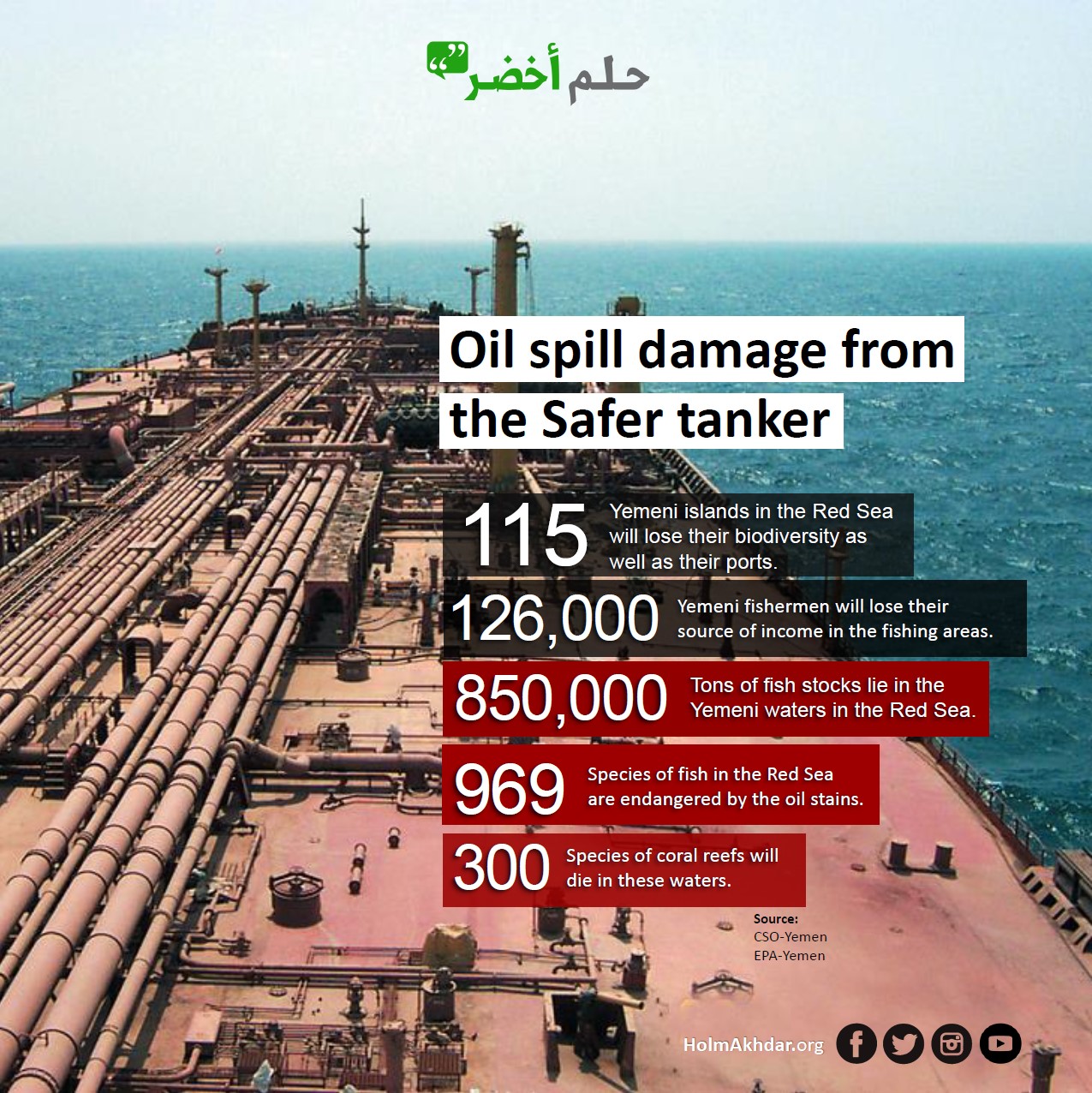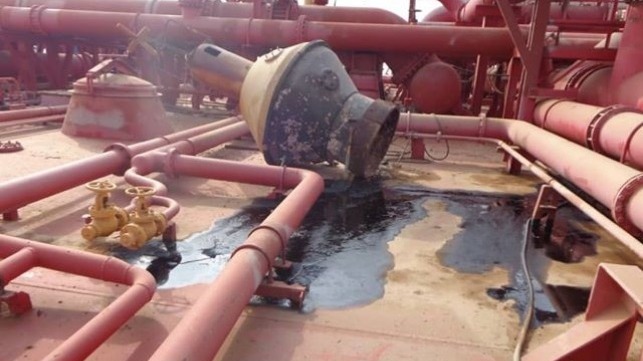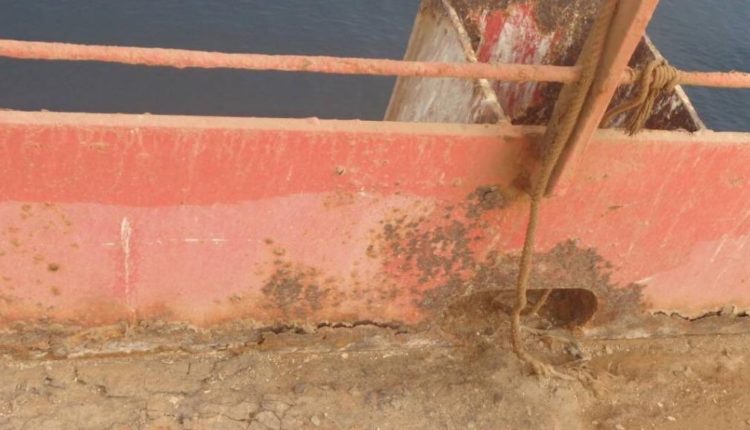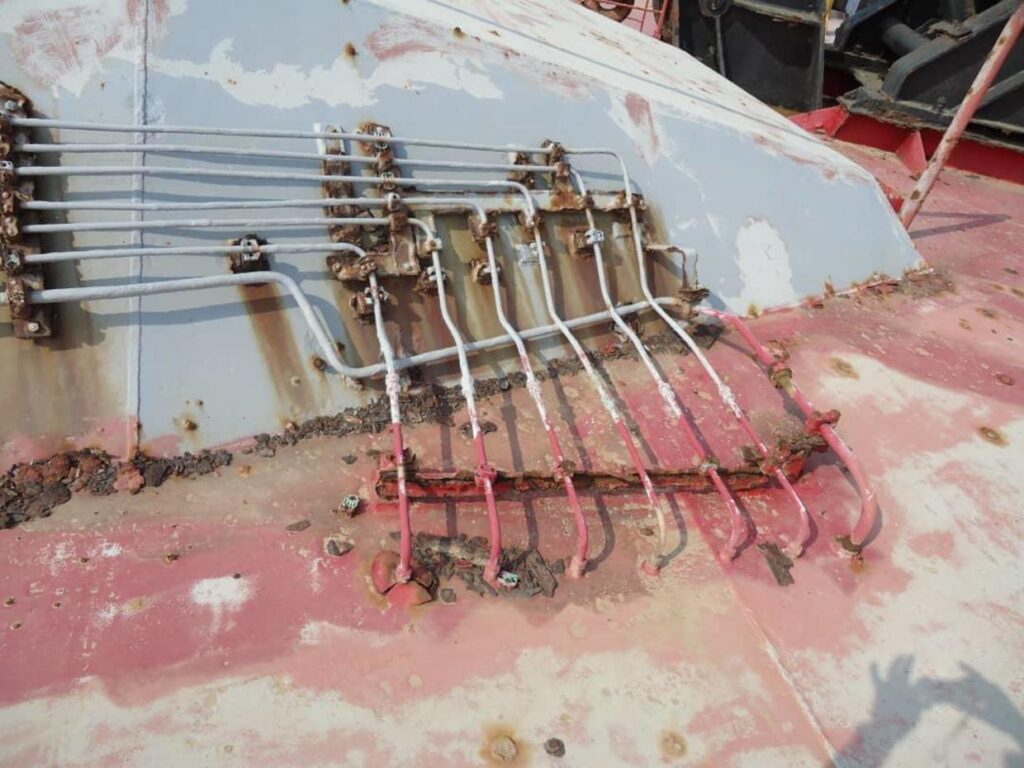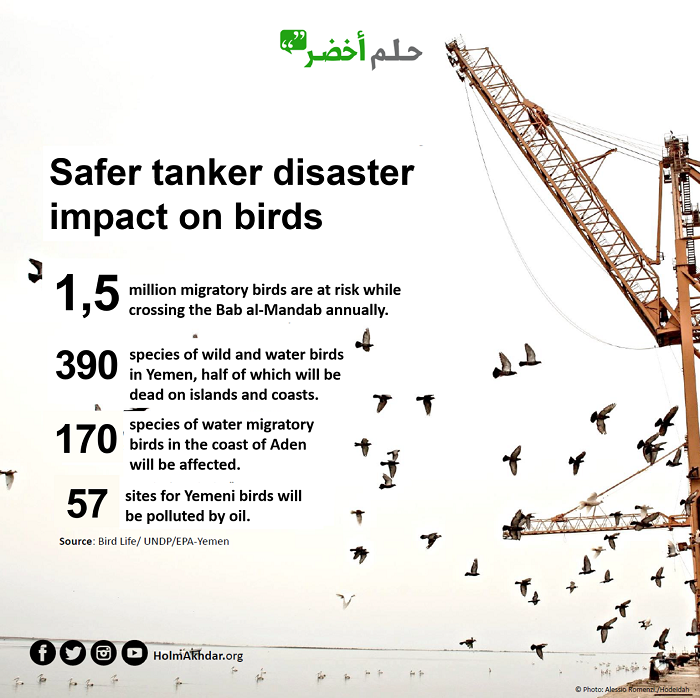Holm Akhdar Reports Unit (Special report) Translated by: Habib Sultan
SANA’A, June 17, 2020 – Yemeni oil tanker FSO Safer, docked off the coast of Ras Isa’a in Al-Hodeidah governorate at the Red Sea, has been left without maintenance for five years now. The hull of the vessel, which contains about 1.1 million barrels of crude oil (156,000 tons), has been deteriorating and one of its pipes has been punctured. This has caused seawater to leak into its engine room and increased the risk of crude oil spill from storage tanks while parties to the conflict continue to show indifference to this serious issue.
Yemen’s marine and coastal environment would suffer total devastation in the event of an oil spill from FSO Safer. An oil spill could stretch out from the Red Sea to the Gulf of Aden and the Arabian Sea. The Yemeni environment would lose all its potentials and Yemen’s coasts would be polluted by heavy crude oil, which blocks out oxygen and sun from reaching the bottom of the sea.
According to estimates, in the event of an oil spill, Yemen would need a long period of time to tackle the fallouts of marine pollution. The Red Sea ecology would need over 30 years to recover from the ensuing dire consequences of the oil spillage.
We, at Holm Akhdar website (the Voice of Environment in Yemen), have tried to gauge the potential impact of an oil spill based on data obtained from official agencies and we have gathered in figures the environmental, economic and humanitarian costs Yemen would suffer should FSO Safer explode or its crude oil spill into the Sea.
The Potential Environmental and Economic Cost of FSO Safer disaster:
115 of the Yemen’s islands in the Red Sea would lose their biodiversity and their natural habitats.
126,000 Yemeni fishermen would lose their only source of income.
67,800 Yemeni fishermen in Hodeida would lose their only source of income because of the disaster.
A total of 148 fisheries cooperative societies in Yemen would shut down.
850,000 tons of fish stocks that exist in Yemen’s waters in the Red Sea, Bab El Mandab and the Gulf of Aden would be destroyed.
969 species of fish (coastal and deep-sea fish) in Yemeni waters would be killed by crude oil slicks.
300 species of coral reefs would disappear from Yemeni waters as crude oil would prevent oxygen and sunlight from reaching them.
768 species of alge in Yemen’s territorial waters, 485 of which are in the Red Sea, with 39 species recorded in the Yemen coast in the intertidal area between Dhubab – Yakhtul and Al-Salif – Al-Urj. would suffer decay and destruction..
139 species of plankton living in Yemeni waters would be suffocated by crude oil slicks.
1.5 million migratory birds are at risk while crossing the Bab al-Mandab annually.
390 species of wild and water birds in Yemen, half of which will be dead on islands and coasts.
57 sites for Yemeni birds will be polluted by oil.
170 species of water migratory birds in the coast of Aden will be affected.
Warnings over Safer Disaster
In mid-June, 2019, the UN Undersecretary-General for Humanitarian Affairs Mark Lowcock, warned in his briefing to the UN Security Council that “in the event of an oil spill from FSO Safer oil tanker, the spill could stretch from Bab El Mandab to the Suez Canal and potentially as far as the Strait of Hormuz.”
On June 5, 2020, Michael Aron, UK’s ambassador to Yemen, warned that FSO Safer would spell catastrophic damage to the Red Sea if the impending disaster is not addressed.
“The recent spillage of 20,000 tonnes of fuel in Russia is causing massive environmental damage in Siberia. The SAFER tanker in Yemen has 150,000 tonnes of crude which would devastate the Red Sea and its coast if it leaked. The Houthis must allow the UN to tackle the issue,” Aron tweeted.
The recent spillage of 20,000 tonnes of fuel in Russia is causing massive environmental damage in Siberia. The SAFER tanker in Yemen has 150,000 tonnes of crude which would devastate the Red Sea and its coast if it leaked. The Houthis must allow the UN to tackle the issue. pic.twitter.com/m5YbMdBy5a
— Michael Aron (@HMAMichaelAron) June 5, 2020
In the event of crude oil spill from FSO Safer, it would be the biggest environmental catastrophe in the 21st century so far.
The Red Sea where FSO Safer is moored is a semi-enclosed and according to estimates, should an oil spill occur, oil slicks could spread all along the Red Sea and would affect all the Red Sea bordering states which are: Yemen, Saudi Arabia, Eretria, Djibouti, and Somalia meaning the disaster goes beyond Yemen’s territorial waters and into international waters.
What is particularly frightening is the fact that this looming catastrophe would inevitably destroy what is left of Yemen’s terrestrial ecosystem and the marine environment. It is so a huge an imminent catastrophe that should be averted without delay.
The relevant Yemeni authorities in Sana’a and in Aden should immediately act and work seriously and responsibly to prevent a potentially serious catastrophe before it is too late.
سفينة صافر: كارثة تلوث وشيكة بالبحر الأحمر
منذ العام 2015، ماتزال الناقلة صافر ترسو في سواحل اليمن، وهي تحمل 1,1 مليون برميل نفط خام وتتعرض للتآكل مما يزيد من خطر تسرب نفطي قد يصل من باب المندب إلى قناة السويس #مصر، وربما قد يصل الى مضيق هرمز
تقرير خاص:
https://t.co/1XoCGwV8wC pic.twitter.com/QB8X94LDTN— حلم أخضر Holm Akhdar (@holmakhdar) January 29, 2020
Source:
CSO-Yemen. / EPA-Yemen. 2014.
National Biodiversity Strategy.| Fifth National Biodiversity Report.(EPA,Yemen)
